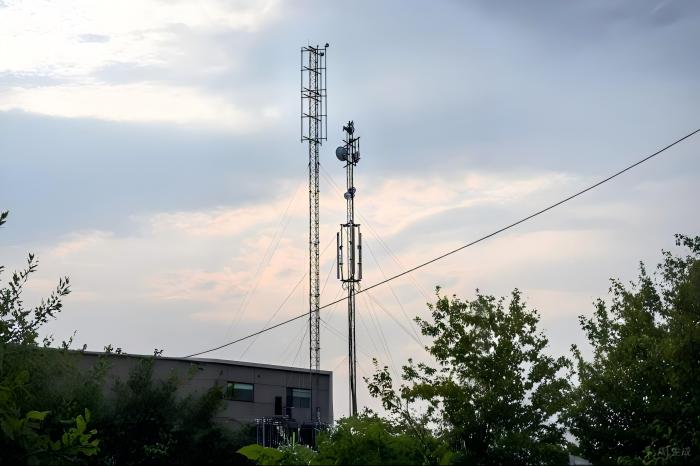For network planners and infrastructure engineers, few decisions impact project economics as profoundly as tower type selection. Guyed wire towers—supported by high-strength steel cables—offer compelling advantages but come with nuanced trade-offs. As 5 densification accelerates and networks expand into challenging terrain, understanding when and why to deploy guyed structures becomes critical. Let’s dissect the technical and economic logic behind this engineering choice.

Unlike self-supporting towers whose costs scale exponentially with height, guyed towers maintain a near-linear cost-to-height relationship. This stems from their core design principle:
Cables replace steel: Instead of relying solely on structural steel for stability, guyed towers offload wind/ice forces to ground-anchored cables. A 60m guyed monopole can use 40–50% less steel than a self-supporting lattice tower of equal height.
Height flexibility: Beyond 45m, guyed configurations become dramatically cheaper. For example:
At 50m, guyed towers cost ≈$28,000 vs. $52,000 for self-supporting alternatives.
At 60m+, savings exceed 50% due to avoided material thickening for buckling resistance.
Table: Cost Per Meter Comparison (USD)
| Height | Guyed Tower | Self-Supporting Tower | Savings |
|---|---|---|---|
| 30m | $900–$1,200 | $1,100–$1,400 | ~15% |
| 45m | $1,400–$1,800 | $2,200–$2,800 | ~35% |
| 60m | $1,800–$2,200 | $4,000–$4,500 | >50% |
Guyed towers require larger land areas for anchor points (typically 3–4 radial cables spaced 109°–120° apart). However, their economic viability hinges critically on land type:
Low-opportunity-cost land: In deserts, tundra, or rural mountains (e.g., China’s Gobi Desert), land costs are negligible. Here, guyed towers slash total project costs by 30–40%.
Urban/high-value land: Anchor footprints (up to 500m) make guyed towers impractical where real estate is expensive. Self-supporting monopoles with 1–2m² bases dominate cities.
Sloped terrain: Adjustable screw-jack anchors enable installation on slopes ≤35°, avoiding costly site leveling.
While guyed towers have lower upfront costs, their lifecycle value depends on three operational factors:
Maintenance intensity: Cables require tension monitoring and corrosion protection. In harsh environments, maintenance costs run 15–20% higher than for self-supporting towers.
Longevity: Hot-dip galvanized cables (per ASTM A123) last 50+ years. Combined with replaceable components, guyed towers achieve >40-year service lives with proper upkeep.
Failure resilience: Single-cable failure can collapse the entire tower—making redundancy and ice/wind load overdesign essential in disaster-prone zones.
For rapid rural coverage, guyed towers solve two critical constraints:
Transportation bottlenecks: In mountainous areas like Guangxi, China, traditional 21m towers (97.9 kg/section) required road construction. New lightweight guyed designs (77.46 kg/section) are drone-transportable, cutting deployment time by 7 days/site.
Coverage extension: A 24m guyed tower increases coverage radius by 19% versus a 21m traditional tower, enabling fewer sites per population covered.
Guyed towers shine in transient scenarios:
Disaster recovery: Modular designs allow assembly in <72 hours. No concrete foundations are needed—grouted soil anchors suffice for 2–3 year deployments.
Event coverage: For Olympics or festivals, telescoping guyed masts enable height adjustments without crane redeployment.
Guyed structures amplify revenue potential in multi-operator models:
High load flexibility: Additional antennas (up to 12/sector) can be added without structural reinforcement.
Revenue stacking: A single guyed tower hosting 3 operators generates ~$1,194/year in lease fees—delivering ROI in 5–7 years.
Shared infrastructure leverage: As seen in China Tower’s model, guyed sites reduce industry-wide capex by $2,100M through co-location efficiency.
Use this checklist to evaluate guyed tower suitability:
Height requirement ≥45m
Land cost ≤$500/acre (e.g., deserts, grasslands)
Soil type: Non-rocky, anchor-friendly soils (silt, sand, clay)
Wind/ice loads: Wind ≤33 m/s; radial ice ≤15 m
X Space-constrained sites: Urban cores, protected wetlands
X High-vandalism zones: Cable cutting risks
For borderline cases, run a 20-year TCO simulation incorporating:
TCO = C_{tower} + C_{land} + \sum_{t=1}^{20} \left( \frac{C_{maintenance} + C_{downtime}}{(1+r)^t} \right)
Where r = discount rate (recommended 5–8%).
Emerging innovations are enhancing guyed tower viability:
IoT-enabled cables: Embedded strain sensors predict tension loss or corrosion.
Hybrid materials: Carbon-fiber-reinforced cables reduce weight by 20% while increasing strength.
Robotic maintenance: Drones automate anchor inspections in inaccessible terrain.
Guyed towers aren’t universally optimal—but where conditions align, they deliver unrivaled cost/height efficiency. They dominate in:
High-altitude rural/remote deployments
Rapidly scalable emerging-market networks
Multi-operator shared infrastructure
As one grid engineer in China’s western deserts noted: “In the Gobi, land is free but steel is expensive. Guyed towers let us redirect 60% of saved capex to grid resilience.”. For your next project, let terrain, height needs, and land economics—not convention—drive the choice.
Industry Insight: In Q1 2025, 78% of new towers >50m in Africa/Southeast Asia were guyed—a 33% YoY increase. Source: TowerXchange Report
Learn more at www.alttower.com